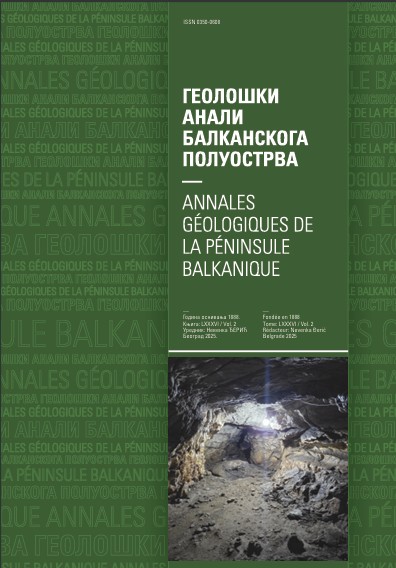Geochemical-mineralogical characteristics of spring sediment of the iron-sulfate mineral water Ljepotica near Srebrenica, RS
Abstract
The Srebrenica area in Eastern Bosnia (Republika Srpska) is characterized by numerous Pb-Zn sulfide ore bodies and several iron-sulfate mineral water springs. The spring Ljepotica appears in the central part of the area and has similar water composition and spring sediment "limonite" mass like nearby the famous medical iron-arsenic water spring Crni Guber. The sequential chemical analysis of iron and XRD-studies of the relative shortly aged spring sediment showed that it is composed by ferrihydrite, jarosite and some goethite. The ratio Fedit/Fetot of 0.76 indicates that jarosite appears as a main constituent, in contrast to the Crni Guber spring sediment in which occurs irregularly and in traces. Trace elements pattern is characterized by appearance of As, Pb, Sb, and Sr as the most abundant (>5000 and up to 1450, 780, and 210 ppm, respectively), small contents of Cr, Cu, Ti, V, and Zn (up to 60 ppm), and traces of Mn, Ni and Sc (below 10 ppm). Chemical analysis of the sediment indicates that jarosite is of the jarosite-hydronium jarosite type.
Copyright (c) 2002 Geološki anali Balkanskoga poluostrva

This work is licensed under a Creative Commons Attribution 4.0 International License.










